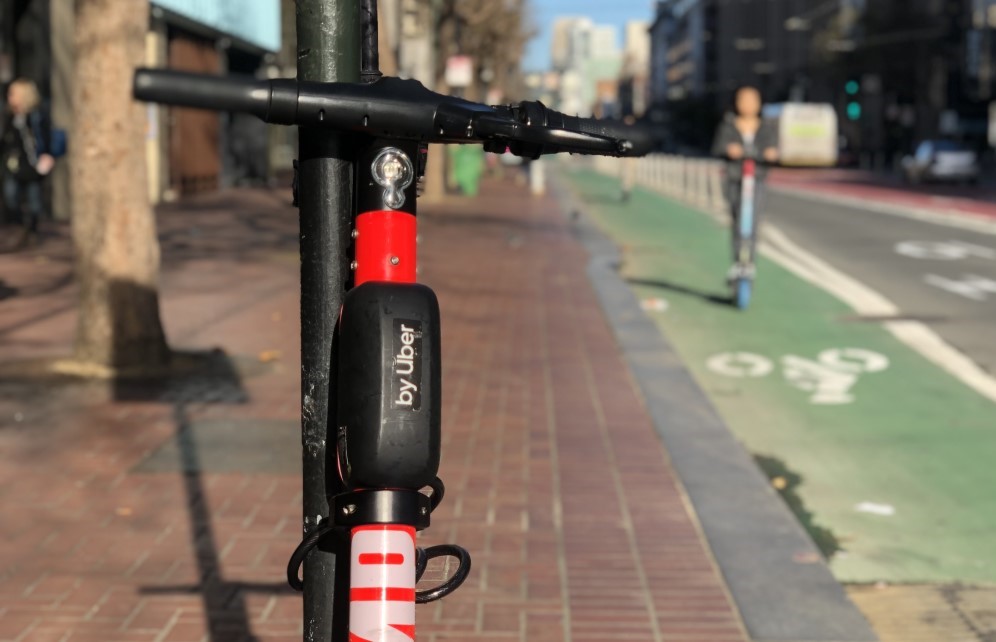By

At the SFMTA, we are excited to expand the range of sustainable transportation options in San Francisco, including scooters, which provide a convenient, on-demand travel option for shorter trips and an alternative to driving.
Based on their positive performance to date, we recently increased the number of scooters permitted through the Powered Scooter Share Permit Pilot Program. This timing presents an opportunity to again share how we can keep scooter riders and pedestrians safe when it comes to scootering around San Francisco.
Since we launched the scooter program, we have taken steps to ensure public safety for both riders and others on the street. One of the most common community concerns is related to scooters riding on the sidewalk, which is against the law in California.
To ensure that our sidewalks are safe for everyone, we have taken proactive steps to address this issue with the four permitted scooter companies currently operating in San Francisco. Examples include requiring scooter companies to provide clear education about sidewalk riding laws, user incentives and penalties, and other safeguards to encourage safe riding and parking.
Maintaining an accessible path of travel is critical for pedestrians and others who use the sidewalk, particularly seniors and people with disabilities. To support this, we require all permittees to have a “lock-to” mechanism on their scooters that allow it be locked to a bike rack. As part of the permit fee, each company pays $75 per scooter to support the installation of new racks and, in return, we have already doubled the pace of installation as compared to prior months. We have developed detailed parking requirements for sidewalk and rack parking that meet all of the city’s accessibility guidelines.
Every day, our SFMTA enforcement team is out on the streets monitoring for compliance. Since the launch of the scooter permits on October 15th, they have been regularly issuing citations to both permitted and non-permitted scooter companies for improperly parked scooters.
If you see individuals or parked vehicles that are not complying with these expectations, we request you file a complaint with the company directly. You can find their contact information our webpage under the “Report Improper Riding or Parking” section.
When making a report, please be sure to provide the following information:
- Date
- Time
- Location
- Photo (if possible)
We also receive complaints via 311 and on the SFMTA website: here.
The SFMTA evaluates all complaints gathered from the permittees directly as well as through 311, and other sources on a monthly basis to track each permittee’s complaints resolution process and ensure that we are consistently reinforcing our safety goals.
We are committed to delivering a safe, equitable, and reliable transportation system to everyone in San Francisco. We look forward to a continued safe expansion of our scooter program and ask for your help in doing so.
Published December 17, 2019 at 06:00AM
https://ift.tt/2qXKk7X
Nhận xét
Đăng nhận xét